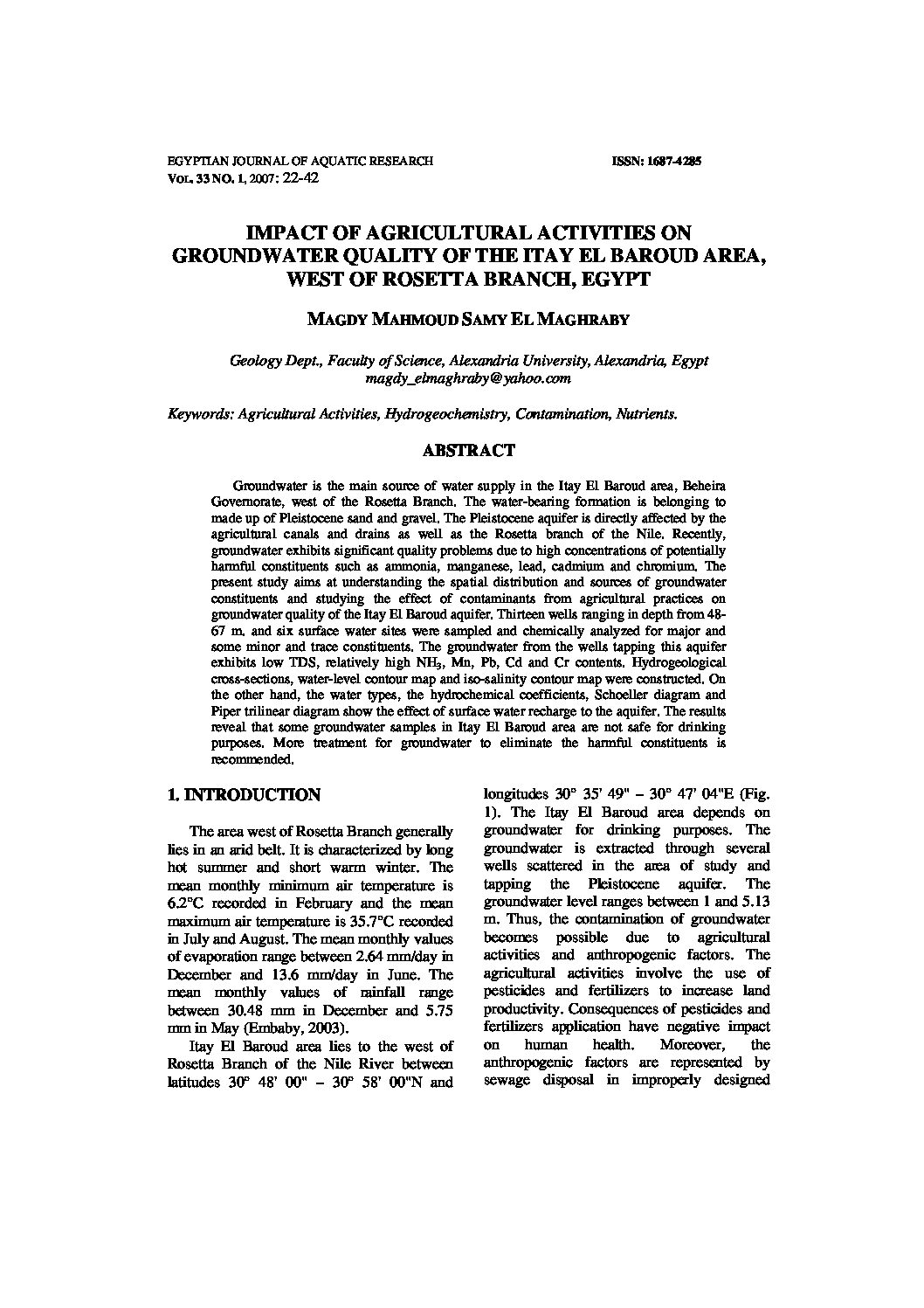Categories
vol-33IMPACT OF AGRICULTURAL ACTIVITIES ON
GROUNDWATER QUALITY OF THE ITAY EL BAROUD AREA,
WEST OF ROSETTA BRANCH, EGYPT
MAGDY MAHMOUD SAMY EL MAGHRABY
Geology Dept., Faculty of Science, Alexandria University, Alexandria, Egypt
magdy_elmaghraby@yahoo.com
Keywords: Agricultural Activities, Hydrogeochemistry, Contamination, Nutrients.
ABSTRACT
Groundwater is the main source of water supply in the Itay El Baroud area, Beheira
Governorate, west of the Rosetta Branch. The water-bearing formation is belonging to
made up of Pleistocene sand and gravel. The Pleistocene aquifer is directly affected by the
agricultural canals and drains as well as the Rosetta branch of the Nile. Recently,
groundwater exhibits significant quality problems due to high concentrations of potentially
harmful constituents such as ammonia, manganese, lead, cadmium and chromium. The
present study aims at understanding the spatial distribution and sources of groundwater
constituents and studying the effect of contaminants from agricultural practices on
groundwater quality of the Itay El Baroud aquifer. Thirteen wells ranging in depth from 48-
67 m. and six surface water sites were sampled and chemically analyzed for major and
some minor and trace constituents. The groundwater from the wells tapping this aquifer
exhibits low TDS, relatively high NH3, Mn, Pb, Cd and Cr contents. Hydrogeological
cross-sections, water-level contour map and iso-salinity contour map were constructed. On
the other hand, the water types, the hydrochemical coefficients, Schoeller diagram and
Piper trilinear diagram show the effect of surface water recharge to the aquifer. The results
reveal that some groundwater samples in Itay El Baroud area are not safe for drinking
purposes. More treatment for groundwater to eliminate the harmful constituents is







